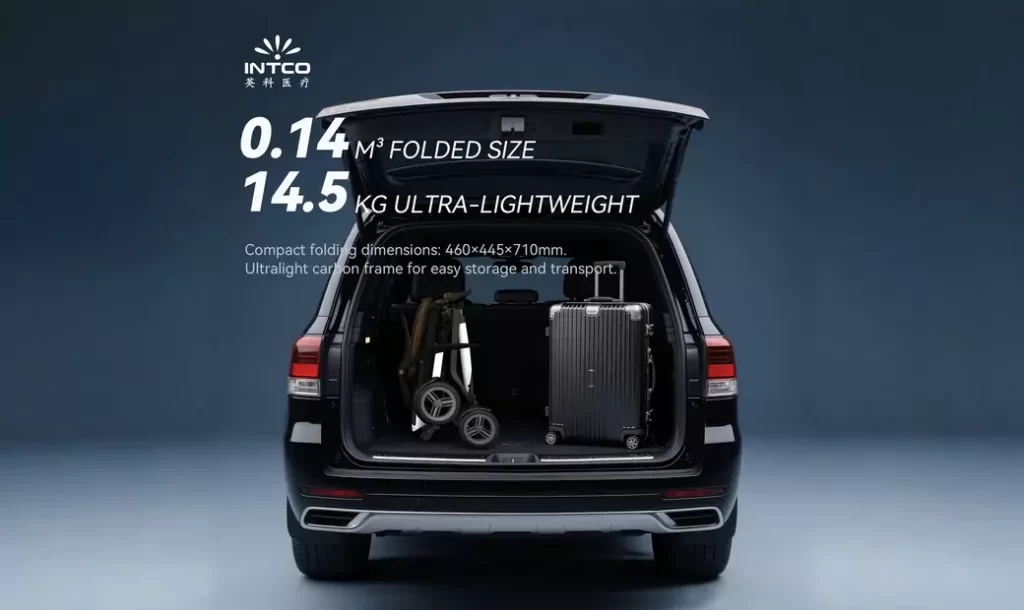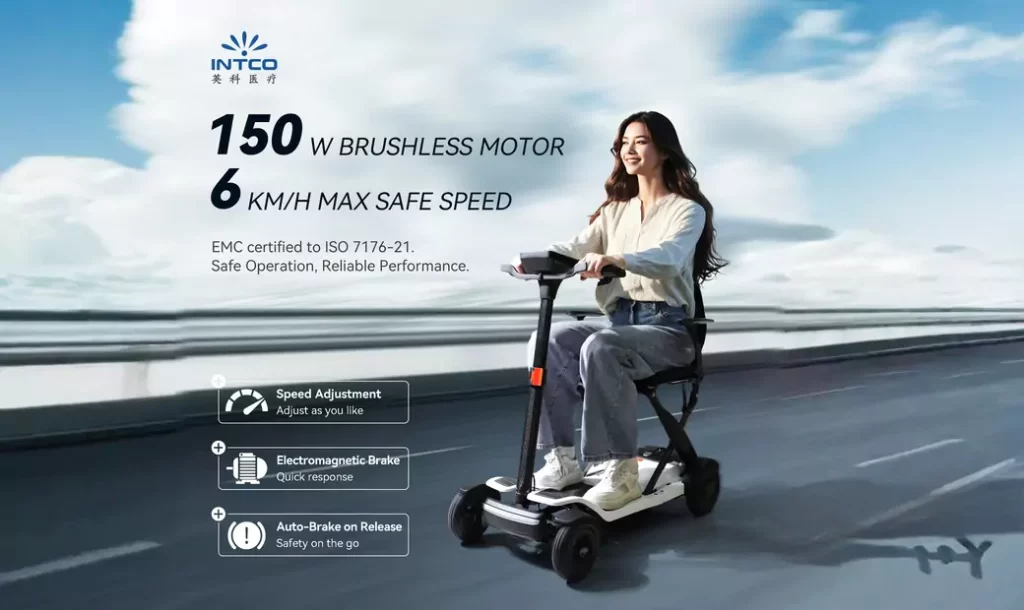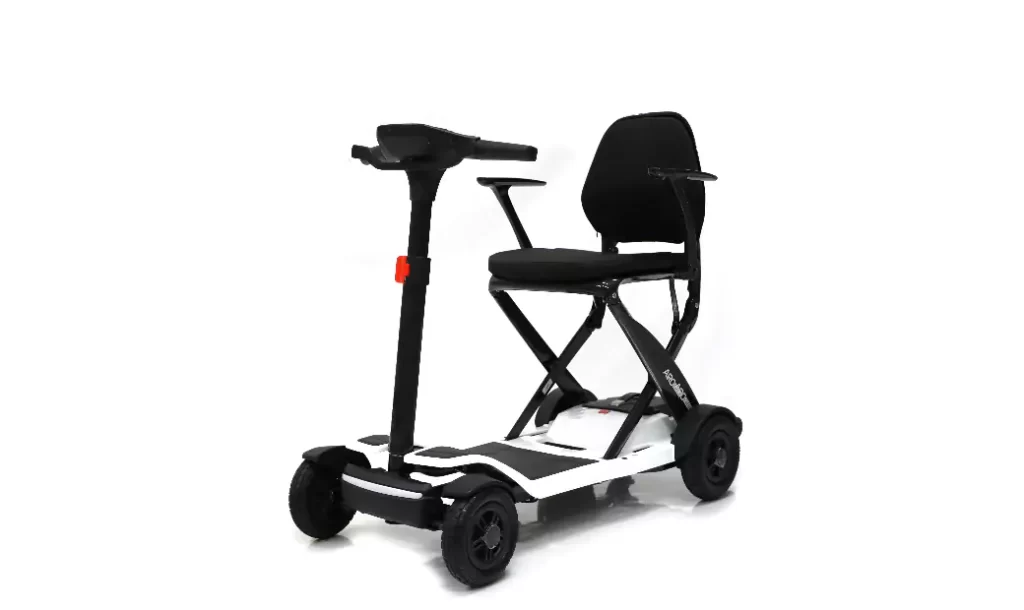Contact Us
Why Lightweight Folding Scooters Are the Future of Portable Mobility
2025-07-30
As urban populations grow and the global community becomes increasingly focused on accessibility and sustainability, lightweight folding mobility scooters are emerging as one of the most versatile and user-friendly mobility solutions of our time. The transition from traditional heavy scooters to lighter, smarter, and more travel-friendly options is not just a design upgrade—it’s a revolution in portable mobility.

The Rising Need for Portable Mobility
Across the globe, over one billion people live with some form of disability. In the U.S. alone, 1 in 4 adults are living with a disability that impacts major life activities[¹]. This demographic is driving an unprecedented demand for assistive devices that are compact, lightweight, and convenient.
In response, the mobility scooter market is evolving fast. Users now seek more than basic functionality—they want ease of use, transportability, and style. Folding mobility scooters have become the answer for many who want independence without the burden of bulky equipment.
Urbanization and Smart Mobility
As cities adopt smarter, more inclusive infrastructure, demand for personal mobility vehicles that integrate with public transit is growing. Urban planners are pushing for barrier-free routing and better access for wheelchair users and scooter riders. For example, cities like Singapore are mapping wheelchair-accessible routes onto public navigation apps[²].
Lightweight folding scooters can be carried onto buses, stored in car trunks, and taken up elevators with ease. Their portability helps users navigate complex transport networks without compromising on comfort or speed.

Feature Comparison: Traditional vs. Folding Scooters
| Feature | Traditional Scooters | Lightweight Folding Scooters |
| Weight | 40–70 kg | 14–25 kg |
| Foldability | Rare or limited | Standard |
| Travel Friendly | Difficult | Cabin-approved designs |
| Storage | Bulky | Fits in closets or trunks |
| Battery Swap | Often fixed | Quick-swap available |
| Smart Features | Minimal | App-connected in newer models |
This table illustrates how modern folding scooters solve many of the common issues users have faced with traditional designs.
Real-World Use Case: Video Demonstration
Wondering how these scooters work in daily life? Check out this hands-on YouTube review that walks through the top 5 lightweight folding scooters available in 2025, highlighting foldability, comfort, and terrain performance:
This independent review offers an unbiased look at real usability without brand sponsorship.
Maintenance and Reliability
Contrary to what some may assume, foldable scooters are often easier to maintain than traditional ones. Their smaller motors, modular components, and lightweight materials mean fewer parts to fail and lower overall maintenance costs.
Additionally, most folding scooters are engineered for indoor and smooth outdoor use, which further reduces wear and tear. Battery replacements are often user-serviceable, and many models feature self-diagnostic tools or companion apps.
Still, regular upkeep remains essential. Maintaining tire pressure, keeping the frame clean, and ensuring the battery is properly charged and stored can extend the scooter’s lifespan significantly.
Spotlight: INTCO Medical’s E-CARY
An excellent example of cutting-edge design is the E-CARY by INTCO Medical. This model is engineered for maximum portability, weighing only 14.5 kg (excluding battery), and includes a carbon fiber frame, 150W brushless motor, and simple one-button fold. E-CARY illustrates how function, style, and innovation can coexist in a single, affordable package.

Accessibility and Public Integration
Mobility is no longer just a personal issue—it’s a public one. In cities like New York, agencies such as the MTA are investing millions in station upgrades, elevators, and accessible transit initiatives[³]. Portable scooters fit neatly into this future-forward approach by enabling users to move seamlessly between transport modes.
Their lightweight frames allow seniors and people with disabilities to navigate dense public spaces without requiring additional support or accommodations, which promotes independent living and reduces reliance on caregivers.
The Path Forward: Smart, Sustainable Mobility
Looking ahead, expect more models with:
-
AI-enhanced driving assistance
-
Bluetooth and app integration
-
Carbon-neutral materials
-
Modular, recyclable components
Governments and insurers are also likely to extend coverage to lightweight scooter options, reducing financial barriers and encouraging wider adoption.
Conclusion
Lightweight folding mobility scooters are not a passing trend—they are the future of portable, personal transportation. Whether for an elderly person navigating a grocery store, a disabled commuter hopping on public transport, or a traveler boarding a plane, these scooters are proving their value.
Their convenience, reliability, and adaptability make them essential tools in the journey toward an accessible, inclusive world.
References
[¹] Centers for Disease Control and Prevention. (2024, May 10). Disability Impacts All of Us (Infographic). https://www.cdc.gov/disability-and-health/articles-documents/disability-impacts-all-of-us-infographic.html
[²] The Straits Times. (2024, January 30). Barrier-free routes for wheelchair users to be shown on OneMap app from March 2024. https://www.straitstimes.com/singapore/barrier-free-routes-for-wheelchair-users-to-be-shown-on-onemap-app-from-march-2024
[³] Metropolitan Transportation Authority. (2023, October 18). MTA accessibility upgrades plan. https://new.mta.info/accessibility


